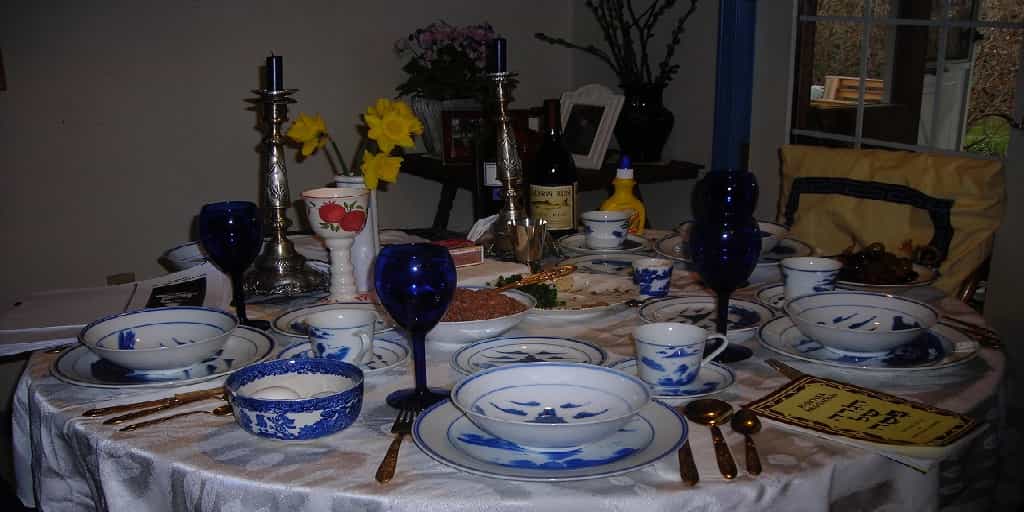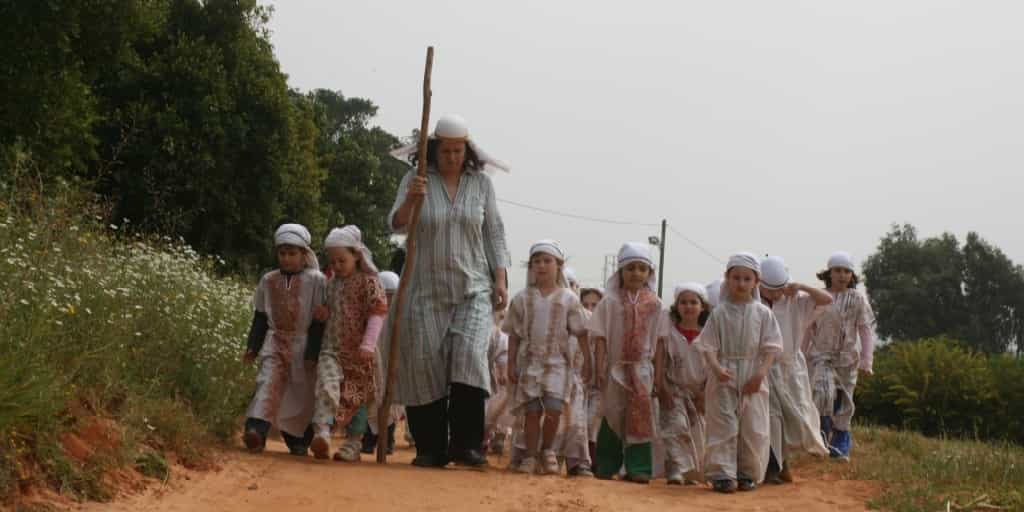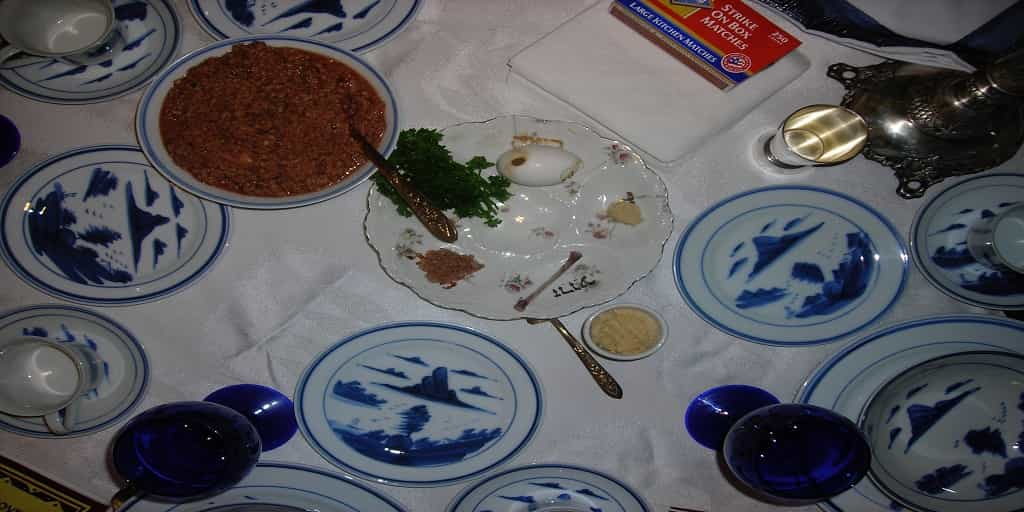This week Jews around the world finished celebrating the Passover holiday. It is one of the most important, and better-known, holidays in Judaism. And it is certainty a holiday during which you can see a lot going on in Israel.
What is the story of Passover?
The Passover holiday celebrates the Jewish exodus out of Egypt and making their way to the Promised Land, Israel. The Jewish people had been slaves in Egypt for the previous 400 years. The work was grueling, the sun was hot, and life was not easy as a slave.
After some time, the ruling Pharaoh died, and a new Pharaoh took over. This new Pharaoh was much crueler than his predecessor. He made them work longer hours, and in worse conditions. One day the Pharaoh decided that the Jewish slaves had to sacrifice all sons born within the year.

This was an incredibly difficult, harsh, and heartbreaking rule for the Jewish slaves to follow. One woman, named Yocheved, had a son who was one year old. She was not prepared to sacrifice her little baby.
After much prayer and reflection, Yocheved decides to do something different. She puts her baby in a basket, takes the basket into the river, and sends the baby along the river. Older sister, Miriam, will follow the basket along the shores of the river.
What does she discover? The basket arrives at the royal palace of the Pharaoh! And the Pharaoh’s daughter takes him in, naming him Moses! Moses will grow up in the comforts of the palace with no knowledge that he comes from the Jewish slaves he sees outside.
While walking around the city, Moses sees an Egyptian guard beating a Hebrew slave and kills the Egyptian. The next day he is walking around the city again, when he sees to Jewish slaves fighting. But when he yells at them for fighting, they point out what he had done the day before. When he understands the magnitude of what he was done, Moses flees to Median.
It is there he rescues sisters of the tribe, daughters of Jethro from strange men harassing them. Grateful for Jethro welcomes Moses into the tribe, providing food and shelter. This results in his wedding with Zipporah, one of the sisters he helped.
While sheaparding one of Jethro’s flocks one day, Moses comes across a bush that is on fire. But amazingly, the bush isn’t burning! G-d has appeared in the bush, and tells him to return to Egypt, and tell Pharaoh to let the Hebrew slaves free.
Moses claims this is a task too large for him, for he had a speech problem. G-d tells him that his brother, Aaron, will help him speak. Moses reluctantly heads back to the palace to confront the Pharaoh.
When Moses sees how horribly the Hebrew slaves are treated, he turns to G-d for guidance. G-d then not only promises redemption, but four different kinds:
- To take the Children of Israel from Egypt,
- Deliver the them from their enslavement,
- Redeem them and acquire them as a special people at Mount Sinai
- And to bring them to the Land G-d promised to the Patriarchs: Abraham, Isaac, and Jacob.
Aaron and Moses repeatedly demand Pharaoh to “Let [their] people go.” Pharaoh will refuse every time, even when Moses warns him that G-d will smite Egypt. So G-d brings ten plagues to Egypt. Each time a new plague begins, the Pharaoh promises to let the Hebrew slaves go. However, he takes back that promise when each plague ends.

What were these ten plagues?
- The waters turned to blood;
- Swarms of frogs overran the land;
- Lice infested all men and beasts;
- Hordes of wild animals invaded the cities;
- A Pestilence killed the domestic animals;
- Painful boils afflicted the Egyptians;
- Fire and ice descended from the skies as a devastating hail;
- A swarm of locusts devoured all the crops and greenery;
- A thick, palpable darkness falls over the land;
After all of these awful plagues, the Israelites were instructed to bring an offering to G-d: a lamb was to be slaughtered and its blood sprinkled on the doorposts and lintel of the Israelite homes. Why is this important? It would indicate which homes the Jews lived in, so the tenth plague wouldn’t strike them, thus passing over the Jews.
What’s the tenth plague?
- All the firstborn of Egypt are killed at midnight of the 15th of the Hebrew month of Nissan.
This breaks Pharaoh’s strictness, and he let’s the Hebrew slaves leave the Egypt. They headed toward the land of Canaan, after cutting through the Red Sea. How? Moses, through the power of G-d, split the Sea, and the Israelites walk right through!
How do we celebrate?
Jew celebrate the Passover holiday in a couple of ways.
We begin before the holiday starts by cleaning out our house from any wheat products. We do A LOT of cleaning.
- Jew clean the pantry, the refrigerator, the cabinets,
- We wash the floors, counters, and tables,
- Then we get rid of any wheat products, and any other foods that are not kosher for Passover.
- And finally, we pull out our kosher for Passover dishes.
When the Passover holiday starts in the evening, families come together for what is called a Seder. Together, we tell the story of the Exodus of Egypt. How Moses came back to Egypt and with G-d freed the Hebrew slaves, bringing together a Hebrew and Jewish nation.
During the Seder, we remember the ten plagues, ask what makes Passover different than any other day. After reading the entire Haggadah, or Passover story.
Check what a Haggadah looks like!
We will also put out a cup for Elijah the prophet, waiting for a sign of the coming Messiah. If he drinks
For a week, Jews do not eat leavened bread, but rather matzah. As a result, Jews eat matzah to remember how the Jews left Egypt without enough time for their bread to raise.
Many times families create different traditions, such as Miryam’s Cups as well as Elijah’s Cup.
What can we see in Israel during Passover? What can we tour during the holiday?
First of all during Passover, you can see Israelis traveling throughout the country. National Parks in Israel have discounted entrance fees. In addition, festivals are hosted around Israel, from Eilat in the south to the Golan Heights in the north. Children, and some adults, have vacation.

Special tours in Israel only during Passover!
Because the Passover holiday is a time for traveling, Samantha Israel Tours has special tours available only during the Passover holiday!
- Hikes in the Northern Israel
During this trip we will go on hikes throughout northern Israel, such as Nahal Elal in the Golan, and Nahal Kziv in the Western Galilee. And through these hikes, we will see some of the most beautiful sights in Israel. From that we will see why the Jews longed so much to come to this wonderful land.
- Negev Exodus Experience
On the Negev Exodus Experience, groups will hike through the Negev, as if we were entering the Promised Land ourselves! We will hike through the Red Canyon near Eilat, visit Neot Semadar, walk through Timna Park, and more!
- Aliyat HaRegel: Passover in Jerusalem
Passover is one of three holidays Jews visit Jerusalem, the holiest city in Jerusalem. These visits to Jerusalem are called aliyat ha’regel, or ‘an ascent by root’. During our aliyat ha’regel trip we will visit the same sites Jews visited for thousands of years! Sites like gates entering the Temple Mount, the Western Wall, ancient mikve’ot, and more!
In conclusion, check out some more sample itineraries for the perfect trip for you! And if you have any special traditions you do during the Passover holiday, please share in the comments below.





